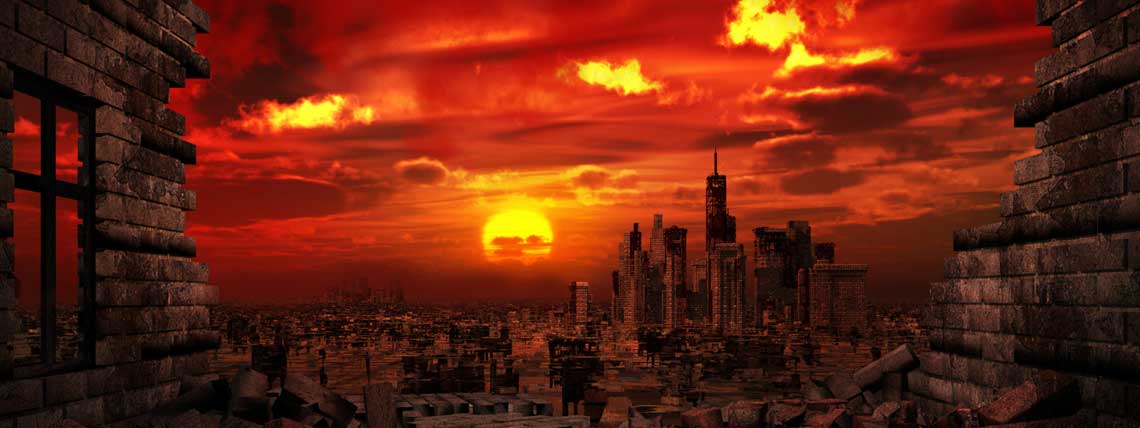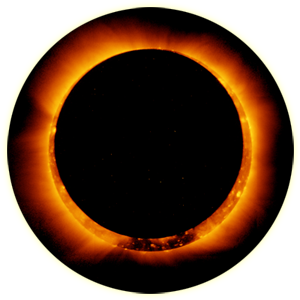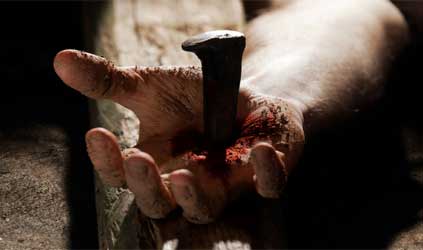October 12, 2014. Updated on 5/16/2018
Steve Sabz
Are the Bible's Last Days (a.k.a., End Time) prophecies describing events that will take place in the future? Have some passages already been fulfilled in modern times? The following article and table will show how past events corroborate key Bible prophecies concerning the Last Days or End Time. In addition, we will learn which of the Bible's prophecies remain unfulfilled (i.e., still future). History often repeats itself (Ecclesiastes 1:9-10), Bible prophecy does not (Joel 2:2, Mark 13:19). See Scripture come alive as we compare historical accounts and relevant Bible passages!
Below you will find three tables. Table 1 (Post-Daniel) lists events still future (except for Zechariah 14:12-15 prophecy and the triumph of Christ's Church over the Roman Empire world), Table 2 (Daniel's 70 weeks) lists events already fulfilled in the past, and Table 3 (Pre-Daniel) lists events also fulfilled in the past. Table 1 (Daniel's 70 weeks) chronicles Daniel's 70 weeks (Leviticus 25:8) prophecy found in Daniel 9:24-27 according to the Biblical, Solar-Lunar calendar utilized by the Hebrews (Genesis 1:14-16). It is also adjusted to include the four Persian kings that are accounted for in Scripture (2 Chronicles 36:22, Ezra 4:5, Ezra 4:7, Ezra 6:14, Esther 1:19, Daniel 11:2) and omits the remaining six enumerated by secular chronologists before Alexander the Great's conquest. This moves the date of the 1st (King Solomon) temple's destruction ahead 166 years to 420 BC, compared to the older, secular date of 586 BC. The resultant 166-year discrepancy is referred to by historians as the missing years in the Hebrew calendar . Accordingly, Daniel's 70 weeks begins in 420 BC and ends 490 years (70 x 7 = 490) later in 70 AD.
Ancient church fathers and historians such as Origen (4.5) , Eusebius (8.2.389) , and Africanus (16.2) who lived in the second and third century AD supported the secular dating convention with the destruction of the 1st (King Solomon's) temple occurring in 586 BC. Moreover, they relied on an uncorrected, Lunar calendar to arrive at Daniel's 70th week during Jesus Christ's crucifixion and resurrection in 30 AD. However, their methodology was flawed because the Hebrews never used a strictly, Lunar calendar, since this would violate God's post-Exodus command to observe the Passover in the spring ('abiyb) season (Deuteronomy 16:1). For instance, if the Lunar calendar was not adjusted to the seasons dictated by the Solar orbit, Passover would drift into midwinter season in a matter of five years.
The preponderance of evidence supports the Solar-Lunar timetable shown on this page for a number of reasons which are outlined below:
New Testament Silence
Authors of the New Testament never cited Daniel's 70 weeks prophecy as being fulfilled by the birth, crucifixion, or resurrection of Jesus Christ. The only reference to Jesus in the Book of Daniel is contained in Daniel's vision where he describes "one like a son of man, coming with the clouds of heaven. He approached the Ancient of Days and was led into his presence" (Daniel 7:13). In the same way, Jesus referred to himself as "the Son of Man coming on the clouds of heaven... sitting at the right hand of the Mighty One..." in numerous eschatology passages of the New Testament (Matthew 24:30, 26:64, Mark 13:26, 14:62, Luke 21:27, Revelation 14:14). Furthermore, the only Biblical figure whom Jesus explicitly stated wrote about him, was Moses (John 5:46, see also Deuteronomy 18:15-18, Acts 3:22, 7:37). Moses did not provide any clues as to the timing of the Messiah's arrival.
No Gap
The insertion of an approximate 2,000-year gap between Daniel's 69th and 70th week, as espoused by Dispensationalism , is not supported by the passage. Gabriel specifically told Daniel that the "vision and prophecy" and related events will be completed in 70 weeks, or 490 years (Daniel 9:24).
Futurists contend that there are six points enumerated in the prophecy (Daniel 9:24) that were not accomplished in 70 AD. They are: (1) "to finish the transgression", (2) "to put an end to sin", (3) "to atone for iniquity", (4) "to bring in everlasting righteousness", (5) "to seal both vision and prophet", and (6) "to anoint a most holy place." However, we shall see that these six points were indeed fulfilled by 70 AD.
The first, "to finish the transgression", was a reference to the apostate Jews who would, in Jesus words, "Fill up, then, the [sin] measure of your fathers" (Matthew 23:32). Jesus was berating the scribes and Pharisees for following in the sin of the Jews before them who killed the prophets. These apostate Jews would "finish the transgression" by killing the ultimate prophet and Son of God.
The second, "to put an end to sin", was in regard to the temple sacrifices that the priest offered on behalf of the people. After his sacrificial death, Jesus, once-and-for-all, "put away sin by the sacrifice of himself" (Hebrews 9:26).
The third, "to atone for iniquity", was also accomplished by the shedding of Christ's blood (Romans 3:25) on the cross for sin that enables the believer to be "reconciled to God by the death of his Son" (Romans 5:10).
The fourth, "to bring in everlasting righteousness", is the probably the most difficult for those with a carnal mind to understand. Nonetheless, it is rather easy to comprehend when we consider that it is the righteousness of Christ that is "apart from the law" (Romans 3:21-22) which makes a sinner acceptable in the eyes of the holy Father-God and therefore permits one to enter into the kingdom of heaven. This is the same righteousness that Jesus said surpasses the external righteousness of the scribes and Pharisees (Matthew 5:20). Jesus also said that the scribes and Pharisees "sit on Moses' seat" (Matthew 23:2). It is God's righteousness through Christ Jesus which is available to all those who believe that "endures forever" (2 Corinthians 9:9).
The fifth, "to seal both vision and prophet", was prophesied by Jesus to occur during the time of Jerusalem's destruction. It was at this time in 70 AD during which were the "days of vengeance, to fulfill all that is written" (Luke 21:22, Cf. John 19:30).
The sixth and final point in Daniel's prophecy that was fulfilled by 70 AD was the anointing of the "most holy place." Since the context of the passage concerns the destruction of "your [Daniel's] holy city" (Daniel 9:24), that is, earthly Jerusalem, the "most holy place" must refer to the new and holy Jerusalem in heaven (Galatians 4:26, Hebrews 11:16, Revelation 3:12, 21:2).
Mashiyach Not Messiah
The Hebrew term "mashiyach" in Daniel 9:25-26 is not synonymous with "the Messiah" as the King James Version (KJV) Bible erroneously renders it . The term simply means "anointed, anointed one" in the Hebrew language . Throughout Scripture, the term "mashiyach" is frequently used in regard to kings (1 Samuel 2:10), priests (Numbers 35:25), the tabernacle (Leviticus 8:10), and alter (Leviticus 8:11), all of which, were "anointed" in Old Testament rituals. In addition, these are the only two passages out of 39 found in Scripture where the KJV Bible translates "mashiyach" (Strong's H4899) as "the Messiah." This scribal inconsistency renders the translation unreliable.
Killed For Sin
Another Hebrew term, "karath" , translated as "cut off" in the KJV (Daniel 9:26), is often used in reference to killing a person who has trespassed against the Lord (Genesis 9:11, 17:14, Exodus 12:15). This particular terminology obviously cannot be applied to the sinless Savior (1 Peter 1:19, Hebrews 4:15). The term "karath" is also associated with making a covenant, or to "cut" a covenant with another person (Genesis 15:18, 21:27, Exodus 23:32). Jesus did in fact make, or "cut" a new covenant in his blood during his last Passover meal with his disciples, (Mark 14:24, Hebrews 12:24, Exodus 24:8). However, that was before he shed his physical blood on the cross. The following phrase, "and shall have nothing" (Daniel 9:26) is also inconsistent with the identity of Jesus Christ. The apostle Paul states that God put "all things under his [Jesus'] feet" and that it is Jesus who "fills all in all" (Ephesians 1:23). Jesus himself stated that "All things have been handed over to me by my Father (Matthew 11:27). So again, this passage cannot refer to Jesus.
John The Baptist
When John the Baptist sent his disciples to ask Jesus if he was "the one who is to come..." (Luke 7:18-20), Jesus replied by referencing his miracles as evidence (Luke 7:21-23), not Daniel's 70 weeks prophecy. In fact, the only timestamp that Jesus cited as proof of fulfilled Messianic prophecy was that he would arrive after John the Baptist had prepared the way for him (Luke 7:26-28, see also Isaiah 40:3, Malachi 3:1, 4:5-6, Luke 1:17).
Peter The Apostle
Perhaps the most convincing proof-text acknowledging the ignorance of Old Testament prophets concerning the timing of the Messiah's arrival is found in a statement made by the apostle Peter to a predominantly Messianic Jewish audience:
Concerning this salvation [of your souls], the prophets, who spoke of the grace that was to come to you, searched intently and with the greatest care, trying to find out the time and circumstances to which the Spirit of Christ in them was pointing when he predicted the sufferings of the Messiah and the glories that would follow.
The apostle Peter to God's elect in 1 Peter 1:10-11 (circa mid-60's A.D.)
As we can see from Peter's own admission, Old Testament prophets, including Daniel, were unaware of the timing of the "sufferings of the Messiah" simply because it was never revealed to them. Thus, time-referenced passages contained in Daniel's 70 weeks prophecy could not have alluded to Christ's first advent, death, and resurrection as ancient church fathers believed.
The Temple
The prophet Daniel prophesied about the End Time (Daniel 9:20-27, Daniel 12:1-13) between forty, and five years before the completion of the 2nd (Zerubbabel's) temple (Ezra 5:2, Haggai 1:14). This temple was dismantled by King Herod circa 18 BC and afterward replaced with a more glorious one (Haggai 2:9). Technically speaking, the temple that existed in Jesus' day and which was destroyed in 70 AD was the 3rd (Herod's) temple. Solomon built the first, Zerubbabel built the second. Zerubbabel's (2nd) temple structure was never destroyed, rather, Josephus records that King Herod disassembled the 2nd and built the 3rd in its place. Since the Bible never mentions a rebuilt-4th temple, the 3rd (Herod's) temple period must be in view. There is another temple that the prophet Ezekiel saw in a vision (chapters 40-48). However, Ezekiel recorded this vision (Ezekiel 40:2) before the 2nd temple was built (Ezekiel 40:1). Also, Ezekiel was a spectator (Ezekiel 40:4) who observed an angel (not a human) measuring a temple that was already constructed in the heavenly vision (Ezekiel 40:3-5).
New Testament authors never describe the destruction of Jerusalem and its 3rd (Herod's) temple as a past event. Furthermore, the apostle John wrote the Book of Revelation as though the 3rd temple was still standing (Revelation 11:1-2). John, unlike Ezekiel, measured the temple himself (Revelation 11:1). On top of that, Jesus stated that the next, or fourth, temple to be raised after the destruction of the third was the temple of his own body (Mark 14:58, John 2:19-22). In summation, the Bible's historical chronology coupled with the absence or presence of contextual indicators constrain the last days before the end of the age to an event already fulfilled in the past, that is, by the year 70 AD during the 3rd temple-period.
Table 1:
Post-70 weeks
|
| WEEK |
YEARS |
EVENT |
SCRIPTURE |
HISTORIAN |
LOCATION |
DATE |
| N/A |
Forever |
Eternal state |
1Co 15:26
Rev 21:1-27
Rev 22:1-5 |
N/A |
Cosmic |
|
| N/A |
undefined |
Jesus returns,
Last day resurrection,
Final judgment |
Mat 25:31-46
Jhn 6:39-44
Jhn 11:24
Jhn 12:48
Act 1:4-11
1Co 15:20-57
1Th 4:13-18
Tit 2:13
Heb 9:28
Rev 20:11-15 |
n/a |
Global |
|
| N/A |
undefined |
Satan thrown into lake of fire |
Rev 20:10 |
n/a |
unknown |
|
| N/A |
undefined |
Camp of the saints
and the beloved city
attacked, nations defeated |
Rev 20:9
Psa 46:4
Psa 48:2
Psa 48:8
Psa 87:3 |
n/a |
unknown |
|
| N/A |
undefined |
Satan is released,
deceives nations (Gog and Magog) |
Rev 20:7-9 |
n/a |
World |
|
| N/A |
5th century AD |
Times of the Gentiles fulfilled |
Luk 21:24 |
Britannica
Britannica |
Jerusalem |
Nov 1, 451 AD |
| N/A |
4th century AD |
Church triumphs,
Christianity official religion |
Mat 16:18
Mat 21:43-44 |
Britannica |
Roman Empire |
Feb 28, 380 AD |
| N/A |
1st century AD |
God strikes Roman Empire,
Vesuvius erupts |
Zec 14:12-15 |
Pliny the Younger
Cassius Dio
Archaeology |
Rome |
Aug 24, 79 AD |
Table 2:
Daniel's 70 weeks with 7-year intervals (fulfilled prophecy)
|
| WEEK |
YEARS |
EVENT |
SCRIPTURE |
HISTORIAN |
LOCATION |
DATE |
| 70 |
63 - 70 AD |
Christians reign with
Jesus in the New
and Holy Jerusalem,
Daniel's 70 weeks
(490 years) End |
Dan 9:24
Jhn 14:2-3
Gal 4:26
2Ti 2:11-12
Heb 10:19
Heb 11:16
Rev 3:12
Rev 19:7
Rev 20:4-6 |
|
Heaven |
Circa Sep 70 AD |
Satan is bound |
Rev 20:1-3 |
|
unknown |
Circa Sep 70 AD |
New Age
Begins |
Dan 12:11-12
Mat 13:40-43
Rev 10:7
Rev 11:15 |
|
Earth |
Circa Sep 70 AD |
Wild beasts gorge
on human corpses |
Deut 28:26
Rev 19:17-18 |
Jos 4.5.2 |
Jerusalem |
Circa Sep 70 AD |
97 Thousand captured,
1.1 Million perish |
Zec 13:8-9
Luk 21:24 |
Jos 6.9.3 |
Jerusalem |
Circa Sep 70 AD |
Survivors exiled,
killed for sport |
Luk 21:24 |
Jos 6.9.2
Jos 7.2.1 |
Jerusalem |
Circa Sep 70 AD |
Abomination of
desolation at temple |
Dan 9:27
Mat 24:28
2Th 2:4 |
Jos 6.6.1
Eus 5.4
Tal 56.a |
Jerusalem |
Circa Sep 70 AD |
Jerusalem and Herod's
temple destroyed |
Dan 9:24
Mat 24:2
Heb 10:19
Rev 18:18 |
Jos 6.363
Jos 10.263 |
Jerusalem |
Aug 31, 70 AD |
Fire and Blood |
Joe 2:30
Act 2:19
Rev 8:7 |
Jos 6.271
Jos 6.8.5 |
Jerusalem |
Aug 31, 70 AD |
Outer temple
overflowes with blood |
Rev 11:1-2 |
Jos 4.5.1 |
Jerusalem |
Circa Aug 70 AD |
Cannibalism |
Lev 26:29 |
Jos 6.201 |
Jerusalem |
Circa Jul 70 AD |
Famine,
mass-starvation |
Luk 21:11
Rev 6:5-6
Rev 9:7-11 |
Jos 6.193 |
Jerusalem |
Circa Jul 70 AD |
Jewish rebels set
temple on fire |
Dan 9:26
Mat 24:2
Rev 18:18 |
Jos 6.177 |
Jerusalem |
Jul 22, 70 AD |
Earthquake,
thunder, lightning |
Luk 21:11
Rev 6:12-14
Rev 8:5 |
Jos 4.4.5 |
Jerusalem |
Circa Jul 70 AD |
Pestilence,
Self-dismemberment |
Luk 21:11 |
Jos 6.164 |
Jerusalem |
Jul 17, 70 AD |
Daily sacrifice
is abolished |
Dan 12:11-12 |
Jos 6.2 |
Jerusalem |
Jul 12, 70 AD |
Temple desecrated,
lakes of blood |
Luk 11:51
Luk 13:1-3 |
Jos 5.11 |
Jerusalem |
Circa 70 AD |
City divided
into 3 factions |
Rev 16:19 |
Jos 5.21
Jos 5.1 |
Jerusalem |
Circa 70 AD |
Lush metropolis
transformed to desert |
Rev 8:7 |
Jos 6.1 |
Jerusalem |
Jun 26, 70 AD |
Armies arrive
from Euphrates river |
Rev 16:12-14 |
Jos 5.1.6 |
Jerusalem |
Apr 11, 70 AD |
Increased wickedness,
gross immorality |
Mal 3:5
Mat 24:12 |
Jos 4.9.10
John |
Jerusalem |
May 12, 69 AD |
Lunar Eclipse
(Total) |
Joe 2:31
Mat 24:29
Act 2:20
Rev 6:12 |
NASA |
Jerusalem |
Oct 29, 68 AD |
Rome descends
into chaos |
Rev 16:10-11 |
Tac 1.2
Tac 1.3 |
Rome |
Jun 09, 68 AD |
Lunar Eclipse
(Total) |
Joe 2:31
Mat 24:29
Act 2:20
Rev 6:12 |
NASA |
Jerusalem |
May 05, 68 AD |
Sea turns
to blood |
Rev 16:3-4 |
Jos 3.9.3 |
Jerusalem |
Jul 05, 67 AD |
Scorching heat |
Rev 16:8-9 |
Jos 3.307 |
Jerusalem |
Jun 26, 67 AD |
Solar Eclipse
(Partial) |
Mat 24:29
Rev 6:12 |
NASA |
Jerusalem |
May 31, 67 AD |
Stones weighing
a talent |
Rev 16:21 |
Jos 5.266 |
Jerusalem |
May 30, 67 AD |
Abomination of
desolation set up |
Dan 12:11
Mat 24:28
Luk 21:20-21
Rev 6:3-4 |
Jos 3.115
Jos 3.6 |
Jerusalem |
Jan 20, 67 AD |
All Israel is saved, Elect flee Jerusalem |
Isa 59:20
Rom 11:25-26
Dan 12:1
Zec 13:8-9
Mat 24:31
Rev 18:4
Rev 12:6
Rev 12:14 |
Eus 5.3
Jos 6.9.3 |
Jerusalem |
Nov 17, 66 AD |
Priest discontinues
Emperor sacrifice |
Dan 9:27 |
Jos 2.17.2 |
Jerusalem |
Aug 8, 66 AD |
God's glory rests
on Mount Olivet |
Eze 11:22-23
Lam 2:7 |
Eus 6.18
Rab L-25 |
Jerusalem |
May 23, 66 AD |
God’s glory departs
from doomed temple |
Eze 11:22-23
Lam 2:7 |
Jos 6.5.3
Tac 5.13 |
Jerusalem |
May 22, 66 AD |
Angels in the skies |
Mat 13:49
Mat 24:31
Rev 12:7 |
Jos 6.5.3
Tac 5.13 |
Jerusalem |
May 02, 66 AD |
Peace ends,
war clouds loom |
Dan 9:27
Luk 21:22
1Th 2:14-16
Rev 6:4 |
Jos 2.305 |
Jerusalem |
Apr 27, 66 AD |
Sword-like star
in the sky |
Luk 21:11 |
Jos 6.5.3 |
Jerusalem |
Mar 20, 66 AD |
Lunar Eclipse
(Total) |
Joe 2:31
Mat 24:29
Act 2:20
Rev 6:12 |
NASA |
Jerusalem |
Jan 11, 65 AD |
Peter and Paul
executed by Nero |
Zec 4:11-14
Mat 24:9
Rev 1:20
Rev 6:9-11
Rev 13:5-7 |
Tac 15.44
Eus 25.5
Dio 3 |
Roman Empire |
Oct 13, 64 AD |
Solar Eclipse
(Partial) |
Mat 24:29
Rev 6:12 |
NASA |
Jerusalem |
Aug 01, 64 AD |
Rome burns,
Nero blames Christians |
Mat 24:9
Rev 6:9-11
Rev 13:5-7 |
Tac 15.44
Eus 25.3 |
Roman Empire |
Jul 18, 64 AD |
Mysterious man warns:
"Woe, woe to Jerusalem!" |
Zep 3:1
Rev 8:13
Rev 18:16 |
Jos 6.5.3 |
Jerusalem |
Sep 23, 63-70 AD |
Peace and
prosperity,
Daniel's 70th week begins |
Dan 9:27
1Th 5:3
Rev 6:2 |
Jos 6.5.3 |
Jerusalem |
Circa 63 AD |
| 69 |
56 - 63 |
The gospel throughout
the whole world |
Mat 24:15
Rev 14:6 |
Eus 3.1
Peter
Paul |
Roman Empire |
Circa 62 AD |
James, brother of Jesus,
is stoned to death |
Mar 6:3
Gal 1:19 |
Jos 20.9.1 |
Jerusalem |
Circa 62 AD |
Lunar Eclipse
(Total) |
Joe 2:31
Mat 24:29
Act 2:20
Rev 6:12 |
NASA |
Jerusalem |
Sep 18, 61 AD (Sukkot Feast) |
Lunar Eclipse
(Total) |
Joe 2:31
Mat 24:29
Act 2:20
Rev 6:12 |
NASA |
Jerusalem |
Mar 24, 61 AD (Passover Feast) |
| 68 |
49 - 56 |
Nero Caesar,
6th Roman Emperor |
2Th 2:3-4
Rev 13:18
Rev 17:10 |
Suetonius |
Roman Empire |
Oct 13, 54 AD |
| 67 |
42 - 49 |
King Herod Agrippa
slain by an
angel of the Lord |
Dan 9:26
Act 12:23 |
Jos 19.8.2 |
Jerusalem |
Circa 44 AD |
| 66 |
35 - 42 |
Claudius,
5th Roman Emperor |
|
Suetonius |
Roman Empire |
Jan 25, 41 AD |
Caligula,
4th Roman Emperor |
|
Suetonius |
Roman Empire |
Mar 18, 37 AD |
| 65 |
28 - 35 |
Lunar Eclipse
(Partial) |
Mat 24:29
Act 2:16-21
Rev 6:12 |
NASA |
Jerusalem |
Sep 27, 33 AD |
Solar Eclipse
(Partial) |
Mat 24:29
Act 2:16-21
Rev 6:12 |
NASA |
Jerusalem |
Sep 12, 33 AD |
Last Days Begin,
3,000 saved on Pentecost |
Joe 2:28-32
Zec 12:10 |
Peter
Peter
Peter
Paul
Paul
James
John |
Jerusalem |
May 22, 33 AD |
Tombs open, holy
people raised to life |
Dan 12:2
Mat 27:51-53
Jhn 5:25 |
|
Jerusalem |
Circa April 33 AD |
Jesus the Messiah -
Ministry,
Crucifixion
And Resurrection |
Psa 22:1
Dan 9:24
Zec 9:9
Mat 21:4-5
Mat 26:2
Mar 15:15
Mar 15:34
Mar 16:6
Luk 3:1
Luk 3:23
Luk 4:18-21
Luk 16:16
Luk 23:33
Jhn 19:28-30
Jhn 1:29
Heb 9:26
1Jo 3:5 |
Jos 18.3.3
Jos 20.9.1
Tac 15.44 |
Jerusalem |
Circa April 33 AD |
Lunar Eclipse
(Total) |
Joe 2:31
Mat 24:29
Act 2:20
Rev 6:12 |
NASA |
Jerusalem |
Oct 7, 32 AD |
|
Solar Eclipse
(Partial)
|
Mat 24:29
Act 2:16-21
Rev 6:12 |
NASA |
Jerusalem |
Apr 28, 32 AD |
|
John the Baptist
beheaded by Herod
|
Mar 6:27-28 |
Jos 18.5.2 |
Jordan |
Circa 31 AD |
| 64 |
21 - 28 |
|
|
|
|
|
| 63 |
14 - 21 |
Tiberius Claudius,
3rd Roman Emperor |
Luk 3:1 |
Suetonius |
Roman Empire |
Sep 18, 14 AD |
| 62 |
7 - 14 |
|
|
|
|
|
| 61 |
0 - 7 AD |
|
|
|
|
|
| 60 |
0 |
Jesus the Messiah
born in Bethlehem |
Dan 2:44
Mic 5:2
Mat 2:1
Mat 2:5-6
Luk 2:10-11
Jhn 7:42 |
Jos 18.3.3
Jos 20.9.1
Tac 15.44
Suetonius |
Judea,
Roman Empire |
Circa 0 |
| 59 |
14 - 7 BC |
|
|
|
|
|
| 58 |
21 - 14 |
King Herod dismantles
2nd Temple, Builds 3rd |
Hag 2:9 |
Jewish Encyclopedia |
Roman Empire |
Circa 18 BC |
| 57 |
28 - 21 |
Augustus Caesar,
2nd Roman Emperor |
|
Suetonius |
Roman Empire |
Jan 16, 27 BC |
| 56 |
35 - 28 |
|
|
|
|
|
| 55 |
42 - 35 |
King Herod
conquers Jerusalem |
|
Jos 14.487 |
Roman Empire |
Circa Mar 36 BC |
| 54 |
49 - 42 |
Julius Caesar,
1st Roman Emperor |
Dan 2:40
Dan 7:7 |
Sue 76
Sue 88 |
Roman Empire |
Mar 15, 44 BC |
| 53 |
56 - 49 |
|
|
|
|
|
| 52 |
63 - 56 |
|
|
|
|
|
| 51 |
70 - 63 |
|
|
|
|
|
| 50 |
77 - 70 |
|
|
|
|
|
| 49 |
84 - 77 |
|
|
|
|
|
| 48 |
91 - 84 |
|
|
|
|
|
| 47 |
98 - 91 |
|
|
|
|
|
| 46 |
105 - 98 |
|
|
|
|
|
| 45 |
112 - 105 |
|
|
|
|
|
| 44 |
119 - 112 |
|
|
|
|
|
| 43 |
126 - 119 |
|
|
|
|
|
| 42 |
133 - 126 |
|
|
|
|
|
| 41 |
140 - 133 |
Jerusalem and Rome sign peace treaty |
|
1Mac 8:17-29
Jos 13.9.2 |
Roman Republic |
Feb 5, 138 BC |
| 40 |
147 - 140 |
Judas Maccabeus
reconsecrates temple |
Dan 8:13-14
Dan 11:31-32
Jhn 10:22-23 |
Jos 10.263
Jos 12.316
Jos 12.323
1Mac 4:52-58
Halafta |
Seleucid Empire |
Dec 25, 140 BC
(Seder Olam Rabba) |
Antiochus Epiphanes IV
desecrates temple |
Dan 8:11
Dan 11:31 |
Jos 10.263
Jos 1.31
Jos 1.34
1Mac 1:54-64
Halafta |
Seleucid Empire |
Dec 15, 144 BC
(Seder Olam Rabba) |
| 39 |
154 - 147 |
|
|
|
|
|
| 38 |
161 - 154 |
|
|
|
|
|
| 37 |
168 - 161 |
|
|
|
|
|
| 36 |
175 - 168 |
|
|
|
|
|
| 35 |
182 - 175 |
|
|
|
|
|
| 34 |
189 - 182 |
|
|
|
|
|
| 33 |
196 - 189 |
|
|
|
|
|
| 32 |
203 - 196 |
|
|
|
|
|
| 31 |
210 - 203 |
|
|
|
|
|
| 30 |
217 - 210 |
|
|
|
|
|
| 29 |
224 - 217 |
|
|
|
|
|
| 28 |
231 - 224 |
|
|
|
|
|
| 27 |
238 - 231 |
|
|
|
|
|
| 26 |
245 - 238 |
|
|
|
|
|
| 25 |
252 - 245 |
|
|
|
|
|
| 24 |
259 - 252 |
|
|
|
|
|
| 23 |
266 - 259 |
|
|
|
|
|
| 22 |
273 - 266 |
|
|
|
|
|
| 21 |
280 - 273 |
|
|
|
|
|
| 20 |
287 - 280 |
|
|
|
|
|
| 19 |
294 - 287 |
|
|
|
|
|
| 18 |
301 - 294 |
|
|
|
|
|
| 17 |
308 - 301 |
|
|
|
|
|
| 16 |
315 - 308 |
Alexander the Great |
Dan 2:39
Dan 7:6 |
1Mac 1:1-4
Halafta |
Macedonian Empire |
Circa 312 BC
(Seder Olam Rabba) |
| 15 |
322 - 315 |
|
|
|
|
|
| 14 |
329 - 322 |
|
|
|
|
|
| 13 |
336 - 329 |
|
|
|
|
|
| 12 |
343 - 336 |
|
|
|
|
|
| 11 |
350 - 343 |
|
|
|
|
|
| 10 |
357 - 350 |
2nd Temple completed |
Ezr 6:15 |
Halafta |
Persian Empire |
3 Adar, 350 BC
(Seder Olam Rabba) |
| 09 |
364 - 357 |
|
|
|
|
|
| 08 |
371 - 364 |
|
|
|
|
|
| 07 |
378 - 371 |
king Cyrus permits
2nd Temple construction,
70-year exile ends |
2Ch 36:21
Ezr 1:1-3
Isa 44:28
Isa 45:1
Jer 29:10
Dan 9:2
Dan 2:39
Dan 7:5 |
Halafta |
Persian Empire |
Circa 371 BC
(Seder Olam Rabba) |
| 06 |
385 - 378 |
|
|
|
|
|
| 05 |
392 - 385 |
|
|
|
|
|
| 04 |
399 - 392 |
|
|
|
|
|
| 03 |
406 - 399 |
|
|
|
|
|
| 02 |
413 - 406 |
|
|
|
|
|
| 01 |
420 - 413 |
1st temple Destroyed,
Daniel's 70 weeks
(490 years) begin |
Jer 52:12-13
Eze 37:22
Dan 9:24 |
Halafta |
Babylonian Empire |
Circa 420 BC
(Seder Olam Rabba) |
| 00 |
440 BC |
King Nebuchadnezzar
besieges Jerusalem,
70-year exile begins |
Jer 25:11
Dan 1:1
Dan 2:37-38
Dan 7:4 |
Halafta |
Babylonian Empire |
Circa 440 BC
(Seder Olam Rabba) |
Table 3:
Pre-70 weeks (fulfilled prophecy)
|
| WEEK |
YEARS |
EVENT |
SCRIPTURE |
HISTORIAN |
LOCATION |
DATE |
| N/A |
8th century BC |
King Tiglath-Pilesar
destroys Samaria |
Isa 8:4
Hos 13:16
Mic 1:6 |
Britannica |
Assyrian Empire |
Circa 722 BC |
King Tiglath-Pilesar
destroys Damascus |
Isa 17:1
Amos 1:5 |
DeMar |
Assyrian Empire |
Circa 732 BC |
| N/A |
10th century BC |
Solomon dies,
Israel divided |
1Ki 9:11
1Ki 11:43
Amos 7:17
Joe 3:2 |
1Ki 12:16-17
1Ki 14:30 |
Israeli Empire |
Circa 926 - 922 BC |
| N/A |
10th century BC |
All promises
to Israel fulfilled |
Gen 22:17-18 |
Jos 21:43-45
1Ki 4:20
1Ki 8:56
Gal 3:8-16
Luk 1:32-33
Act 2:29-36 |
Israeli Empire |
Circa 971 - 931 BC |
CITE:
Sabz, S. (2014, October 12). Daniel's 70 weeks prophecy table. Retrieved from https://scienceandbibleresearch.com/daniel-seventy-weeks-table.html
Steve Sabz
Steve Sabz is the author and founder of Science and Bible Research. He is a professional educator with a Bachelor of Science degree in Exercise Physiology from William Paterson University, where he also completed graduate level courses in Human Physiology and Endocrinology. Steve has been studying theology since 2015 and has successfully completed seminary level courses in Textual Criticism, Biblical Hermeneutics, Eschatology, Puritan Theology, Ancient Church History, Soteriology, Biblical Theology, Prolegomena, and Biblical Greek from Puritan Reformed Theological Seminary, Southern Baptist Theological Seminary, and Dallas Theological Seminary. Steve is also the author of Evolution's Complexity Problem: See How Evolution Falls Apart At Its Beginning and End Time Rewind: An Exploration In Bible Prophecy And The Fate Of The World.
















